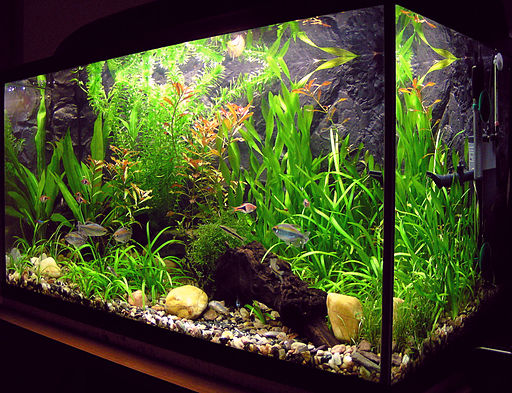Being an aquarium keeper is no easy task; there will be numerous problems to watch out for over time. One of the most common that you may encounter is an infestation of worms.
These fish tank parasites can wreak havoc on your aquarium no matter how experienced you are. As a responsible owner, it is in your best interest to be aware of the type of worms that can affect the health of your fish and plant life.
In this article, we will be talking about the common worms in a fish tank – what they are, how to identify them, and how to get rid of them.
Contents
Types of Fish Tank Worms and Solutions
White Worms (Detritus worms and Planarians)
Detritus worms are a common sight in aquarium set-ups. You will most likely come across these white worms in fish tanks on a regular basis. Thankfully, detritus worms pose no direct harm to your fish and plant life.
These worms are a type of detrivore, which means they will only eat dead fish or other sources of decay, such as uneaten food.
Thankfully, in this way, they can be a help to your aquarium – as both a great food source for your fish and natural cleaners that keep the tank free of waste.
The only real problem this water worm poses is when they undergo a population boom. Detritus worms still need oxygen; if there are too many of them in one tank, they may compete with your fish for the limited air available.
You will know this is the case when worms reach the surface of the water or cling to the sides of your tank where there is more oxygen present.
Otherwise, detritus worms will happily stay at the bottom within the gravel, where there is plenty of waste to feed on.
A population explosion of detritus worms is often caused by poor tank filtration, insufficient cleaning, and too much feeding. To treat a case such as this, simply cut back on the amount of food given during feeding times, clean the tank, and change your gravel.
Another type of white worm is the planaria. Planarians look much like detritus worms but tend to be flatter and less wriggly than the former. Thankfully, they also pose no threat.
Flukes
If detritus worms can be easily spotted, flukes are microscopic and cannot be seen by the naked eye. These parasites will hook themselves onto their host, eating away skin and sucking blood.
Even though they are microscopic, a fish infested with these worms will show symptoms. The most obvious will be flashing; a behavior in which fish rub themselves against objects or the aquarium walls.
Other symptoms include bruising (due to flashing), red and irritated skin, and a layer of mucus on the body.
To treat flukes, a potassium permanganate bath is necessary, as well as a thorough cleaning of your tank.
Leeches
Leeches are soft-bodied creatures that are usually an inch in length. They can, however, grow much larger after feeding.
They are indeed dangerous to your fish, as they can stick to the surface of your watery pets and suck out their blood.
Identifying leaches is easy; you will often see them clinging to the fish’s side or within their mouth.
Getting rid of leeches would require a salt bath, which would cause the offending parasites to fall off from the infected pet. Manually removing leeches with tweezers may also be necessary.
Anchor Worms
If you notice thin, white worms attached or anchored to the skin of your fish, this indicates that you have an infestation of anchor worms.
Not only are they unsightly, but anchor worms can lead to ulcers on the fish’s body. They lay eggs within the animal they infest, burrowing deep into the fish’s muscles, causing holes. Furthermore, these ulcers can lead to secondary infections which are fatal.
Manually removing the worms using tweezers may be necessary in extreme cases. However, a potassium permanganate bath should typically cleanse your pets of all anchor worms.
Preventing Harmful Worms in Fish Tanks
As they say, prevention is the best cure. You will save yourself a great deal of time and effort in dealing with harmful aquarium worms if you make your tank unappealing to them.
- First, always remember to properly quarantine fish that appear sick, unhealthy, or injured as soon as possible.
- Second, make sure to quarantine any new fish or plants before adding them to your tank, as this will greatly decrease the chance of introducing parasites.
- Third, remember to properly clean and sterilize every item that goes into your tank, such as plastic décor.
- Fourth, always make sure that your tank is clean and that your fish are well-fed.
- Finally, of course, always remember to treat your tank as soon as an issue arises. A close and careful eye can change the tides for the health of your fish.
Do you have any experience dealing with fish tank worms?





